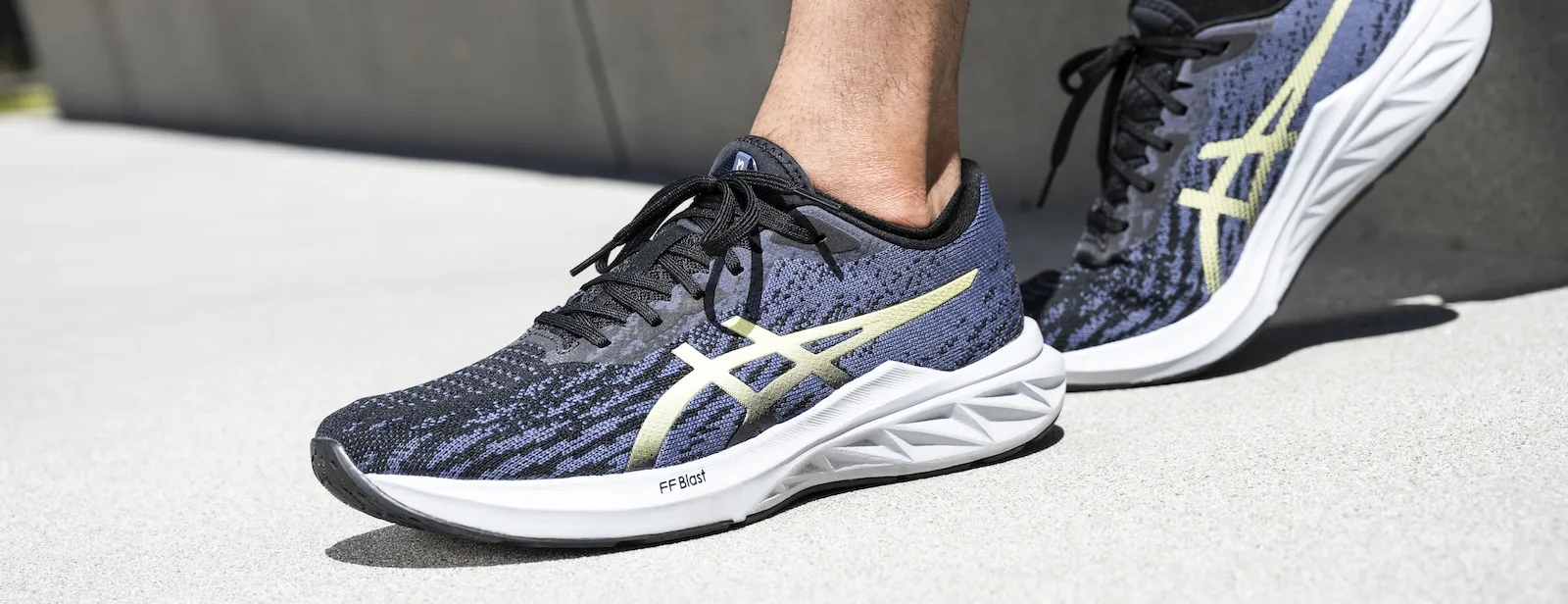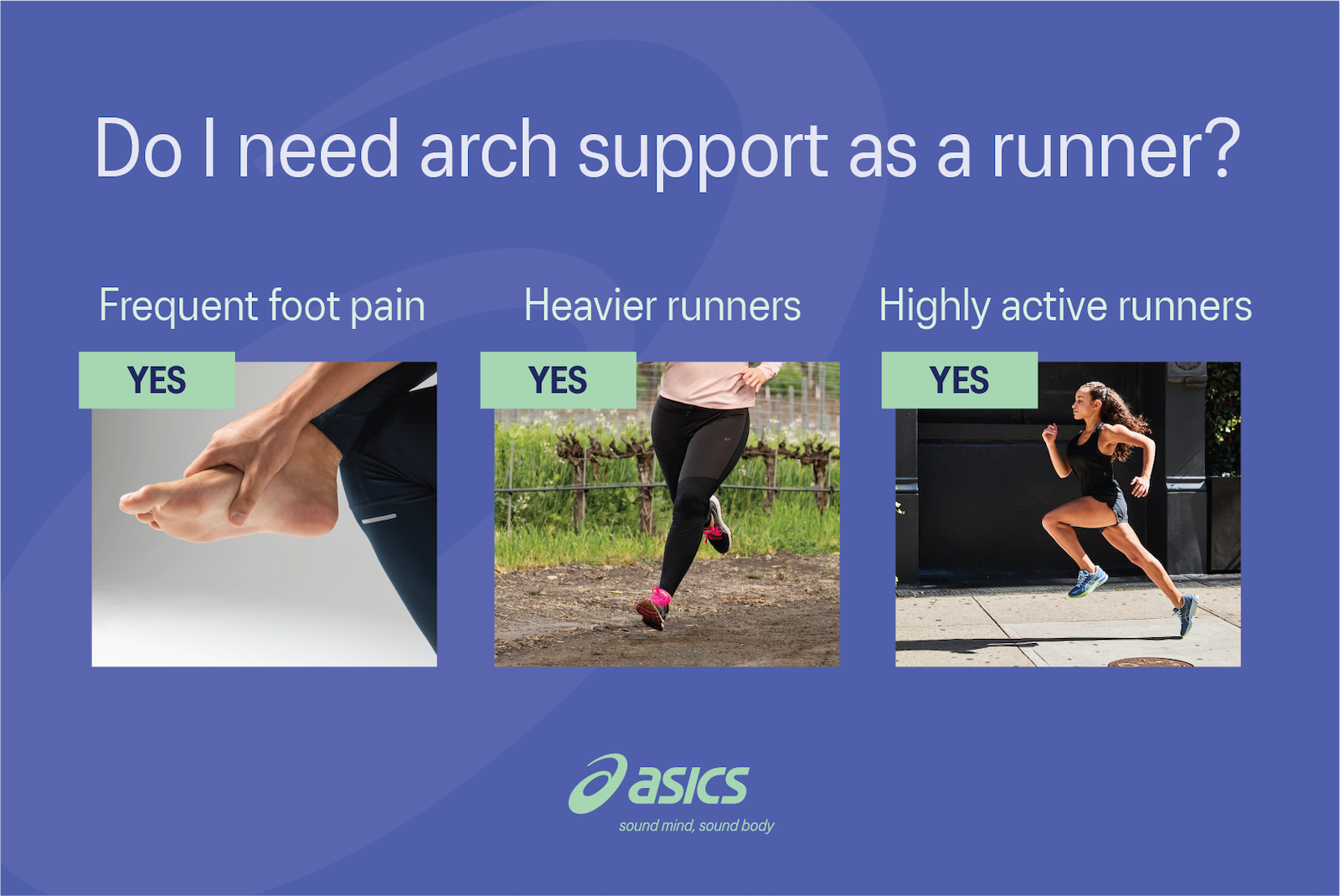
Choosing Running Shoes with Arch Support
May 12, 2022 / ASICS Australia
Finding running shoes with proper arch support isn’t simple because arches differ from person to person.
There are different varieties of footwear designed to support each type of arch—high arch, flat, or average. Determining which type of arch support is most appropriate for you can improve your athletic performance.
What is arch support in running shoes?
Arch support absorbs and stabilises weight carried during a run. There are differences in how each runner pronates.
“A high arch support running shoe can help align your foot to a more neutral position," said ASICS FrontRunner member Evan Scully .
- Runners with flat feet or low arches usually contact the ground with their outside heel, along with shifting their weight more inward.
- High arch runners typically tend to have less inward weight shift after foot contact. They use the tips of their toes to push off.
- Runners with average arches generally make contact with the outside of their heel, rolling inward to support any shock while pushing off.
Do I need arch support as a runner?
It’s critical to make sure that shoes fit properly and provide support for the runner’s unique arch type.
“Check that the foot is supported during the run. You also have to be careful that the stabilisation is not too strong. When choosing, you also need to take into account the weight of the runner and the ground on which he will run,” said Łukasz Kłos , a physiotherapist.

Examples below show the difference between arch support shoes and non-arch support shoes for athletic performance.
- Runners with flat feet
- Runners with high arches
- Runners who experience frequent foot pain
- Heavier runners
- Highly active runners
How to choose running shoes for different arch types
ASICS carries a wide variety of running shoes that feature extra cushioning and support. These shoes can help stabilise runners that have supination and overpronation. If you’re unsure about your pronation type , you can visit an ASICS retail store and our expert staff can guide you to your perfect fit with a personalised FOOT-ID service .
1. Things to consider for improved stability
Stabilisation support is a critical lower body health need. ASICS FrontRunner member Łukasz Kłos explains that having the correct pair of running shoes with arch support can “prevent overloading of the calf and hip joint. They allow you to maintain the appropriate pelvic balance in people who have problems with flat feet and overpronation [as well as] prevent functional differences in limb length”.
2. Things to consider for supination
Supinators require shoes that provide more cushioning to disperse the impact when their feet make contact with the running surface. Consider looking for running shoes that feature FLYTEFOAM™ technology , FLYTEFOAM PROPEL™ technology, or AMPLIFOAM™ technology, which are lightweight and have resilient cushioning foam materials.
3. Things to consider for overpronation
Overpronation occurs when a runner lands on the outside area of their heels, rolling most of the weight towards the inner edge instead of the ball of their feet. To help with this issue, consider looking for running shoes with additional support to help improve your performance.
4. Things to consider for cushioning and support
For more cushion and arch support, you’ll maybe want to consider a pair of running shoes that offer better stability. The GEL-KAYANO™ shoe could be an option to keep in mind if you’re looking for a more stable shoe. The TRUSSTIC™ system within these shoes can benefit your stride.
5. Things to consider for plantar fasciitis
Plantar fasciitis is an issue that can cause a lot of discomfort for runners. It's generally said that, to improve your performance if you can consider finding running shoes that provide additional support within the heel area of the foot. In doing so, you could be more comfortable in completing your session without the aches and pains plantar fasciitis can bring.
How do high arches affect runners?
Runners with high arches have a unique pronation. Those who have supination are at a higher risk of developing injuries like plantar fasciitis and shin splints. Beyond wearing running shoes for high arches, there are practices that you can implement in your running routine to avoid any of these situations.
Tips for running with high arches
For those who run with high arches—there are tips for what to do before your running session to help with toe-off and pronation. Supinators make contact with the surface they’re running on with their heels first, and with no disbursement of the weight to any other area of their feet. The following advice can assist runners with high arches.
1. Stretching before and after your run can help prevent future strain or discomfort from running with high arches.
2. Paying attention to posture as you run can help remove weight felt on specific areas of your feet.
3. Run on smooth, even surfaces. Running on smooth surfaces can allow for smoother weight transfer and foot movement.
Improve performance and stability with running shoes that match your arch type
ASICS’ high arch running shoes support runners’ performance with the help of features and materials that provide support, comfort, and stability. Whether running with flat feet, overpronation, or supination, ASICS has a few arch support options for running shoes that will help improve performance.
Shop Structured Shoes for additional support
Shop Cushioned Shoes for neutral pronation
Please note: This information does not contain or constitute medical advice or a medical opinion, and it is provided for informational purposes only. You should always consult a qualified and licensed medical professional prior to beginning or modifying any diet or exercise program.